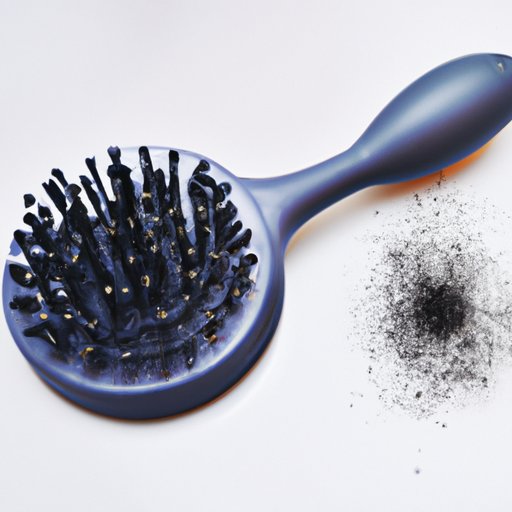
Introduction
Dirty and gunky hairbrushes are a common problem that many people overlook. A buildup of hair, oils, dirt, and product residue can make your hairbrush less effective and even spread germs. In this article, we will provide a comprehensive guide on how to clean hairbrushes and explain why it’s important.
The Ultimate Guide to Cleaning Your Hairbrush: A Step-by-Step Tutorial
The first step in cleaning your hairbrush is to gather the right tools. You will need a comb, scissors, a bowl of warm water, shampoo or dish soap, and an old toothbrush.
Next, follow these steps:
- Remove any hair stuck in the brush by using the comb and scissors. Cut as close to the root as possible.
- Soak the brush in warm water and a small amount of shampoo or dish soap for a few minutes to loosen any dirt and product buildup.
- Scrub the brush gently with an old toothbrush to remove any remaining dirt.
- Rinse the brush thoroughly with warm water.
- Pat dry with a clean towel and allow it to air dry before using it again.
For plastic brushes, you can also clean them in the dishwasher by using the top rack and avoiding the heat dry cycle. For boar bristle brushes, be sure to use a gentle shampoo or soap specifically designed for natural hair bristles.
When removing hair from the brush, be gentle and pull in the direction of the bristles.
Why Cleaning Your Hairbrush is More Important Than You Think: Tips and Tricks to Keep Your Brush Germ-Free
Cleaning your hairbrush is more important than you might think. Not only does it extend the life of your brush by removing buildup, but it also helps prevent the spread of germs from your hair to your scalp and can promote healthy hair growth.
To maintain a clean hairbrush, try these tips:
- Remove hair from your brush after every use.
- Clean your brush at least once a week.
- Do not share your hairbrush with others.
- Store your brush in a clean, dry place.
- Replace your brush every six months to a year.
DIY Hairbrush Cleaner: How to Create an All-Natural, Chemical-Free Solution
If you’re looking for a natural cleaning solution for your hairbrush, try using household ingredients like baking soda, vinegar, or essential oils.
To make a simple cleaning solution, mix one tablespoon of baking soda into a bowl of warm water, add a few drops of essential oil like tea tree or lavender, and soak your brush for a few minutes. Rinse and allow it to air dry.
The benefits of using a chemical-free cleaner include avoiding excess exposure to harsh chemicals and reducing your environmental impact.
Efficient and Time-Saving Hacks to Clean Your Hairbrush
If you’re short on time, there are a few hacks you can use to quickly and efficiently clean your hairbrush.
One of the quickest ways to remove hair from your brush is by using a comb. Slide the comb in between the bristles and gently pull up to remove any hair.
Another hack is to soak your brushes in warm water and shampoo for a longer period to save time on scrubbing.
The Dos and Don’ts of Cleaning Your Hairbrush: A Quick Guide
Here’s a quick guide to help you clean your hairbrush effectively:
- Do remove hair from your brush after every use.
- Do clean your hairbrush at least once a week.
- Do use gentle shampoo or soap for natural hair bristle brushes.
- Don’t use hot water, as it can damage the bristles and the brush base.
- Do let your brush air dry completely before using it again.
- Don’t share your hairbrush with others.
Conclusion
Regularly cleaning your hairbrush is important for maintaining healthy hair and avoiding the spread of germs. Using the right tools, following a step-by-step process, and understanding the dos and don’ts will ensure that your brushes are kept clean and effective. Remember to remove hair after every use, clean your brush at least once a week, and store it in a clean and dry place. By following these tips, you can keep your hairbrush germ-free and your hair happy and healthy.




